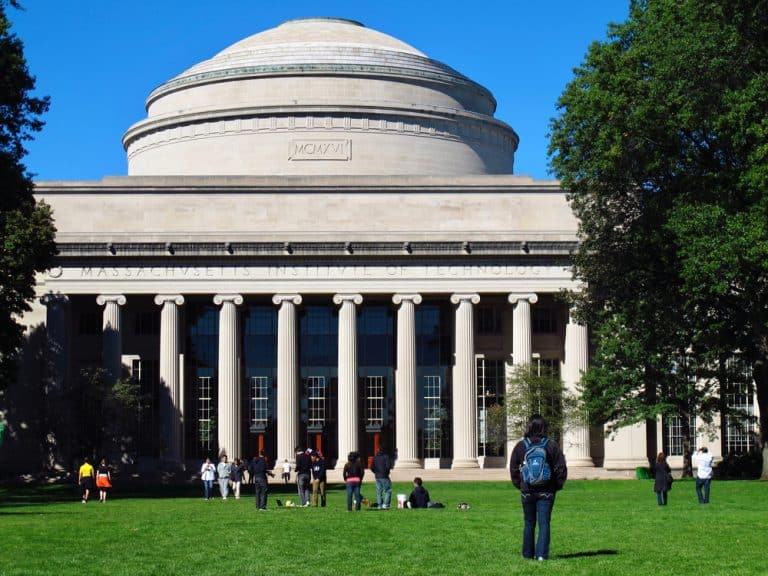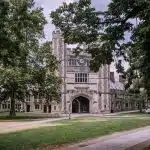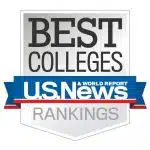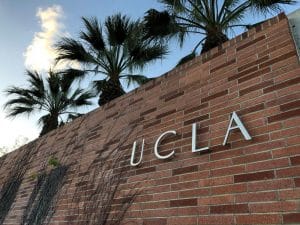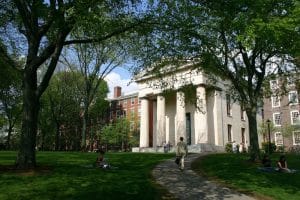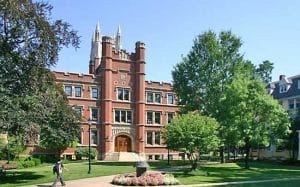MIT’s summer programs are a no-brainer if you’re after a challenge and world-class learning. If MIT is on your college wishlist, this is your chance to see what it’s really like. You’ll get a feel for the vibe, meet professors, chat with alumni, and hang out with current students—all before senior year hits.
In this blog, we’ll walk you through what MIT summer programs are all about—what you can expect, who they’re for, and how to apply. We’ll cover the different options available from hands-on research to tech-focused workshops, and break down how these experiences can shape your future in STEM and beyond.
- What Are the Summer Programs at MIT?
- MIT Introduction to Technology, Engineering, and Science (MITES)
- Program for Research in Mathematics, Engineering and Science for High School Students (MIT PRIMES)
- √mathroots
- Research Science Institute (RSI)
- Women’s Technology Program (WTP)
- Beaver Works Summer Institute (BWSI)
- Summer Science Program (SSP)
- Frequently Asked Questions
- Takeaways
What Are the Summer Programs at MIT?
MIT doesn’t have open-enrollment summer programs where any high school student can just sign up, stay in the dorms, and take classes. But don’t worry—there are still some pretty awesome options. A few partner organizations host smaller, more focused programs right on campus.
So, if diving into the human genome, building your own robot, or exploring the stars sounds like your kind of summer, you’ll definitely want to check these out:
- MIT Introduction to Technology, Engineering, and Science (MITES Summer)
- MIT PRIMES
- √mathroots
- Research Science Institute (RSI)
- Women’s Technology Program (WTP)
- Beaver Works Summer Institute (BWSI)
- Summer Science Program (SSP)
Let’s go over these MIT summer programs one by one below.
MIT Introduction to Technology, Engineering, and Science (MITES)
- Duration: 6 weeks
- Application deadline: February 1, 2025
- Location: On-campus (MIT)
- Cost of attendance: Free admissions
- Eligibility: High school juniors who are U.S. citizens or permanent residents
Think of it as a full college semester packed into one exciting summer. The MITES Summer Program gives you a taste of advanced math and science, plus cool electives you probably won’t find in your high school—like Machine Learning, Architecture, or Genomics. You’ll explore how STEM connects to real life and how you can use it to make a difference in the world.
You’ll get a feel for life at MIT, learn how the college process works, and start building the skills you’ll need for a future in STEM. Expect weekdays filled with classes, recitations, workshops, and campus tours from 9 to 5. Evenings and weekends? You’ll dive into social events, homework help, and adventures around Boston. Best part? Room and board are totally free.
Application process
Here’s a quick and easy breakdown of the MITES application process:
- Basic info. Fill out a quick section with your general information. Choose to apply to one or both MITES national programs. (Tip: Apply to both! You’ll only get admitted to one.)
- Academic info. List your high school courses. Upload your unofficial transcript showing: (a) 9th and 10th grade courses and GPA, (b) 11th grade first-quarter or first-semester grades (if available).
- Short essay questions. Answer a set of short prompts to help the admissions team get to know the real you. Most responses are up to 300 words (except one, which is 400 words max). Start early and treat each prompt as a chance to show something different about yourself. Here are the 6 essay questions to choose from:
- How have your lived experiences and/or identity shaped your aspirations?
- What are you passionate about? How have you explored this passion?
- Share a challenge or obstacle you faced. How did you handle it, and what did you learn?
- What subject or field of study are you most interested in right now? Why?
- If you could create something using STEM to help the world, what would it be and why?
- Why do you think you’re a good fit for MITES? (Up to 400 words; you can talk about how you connect with MITES’ mission, how you’d benefit from it, or how you’ve supported equity and inclusion.)
- Recommendations (3 in total). Ask the following people to fill out an online recommendation form: One math or science teacher (e.g., Algebra, Chemistry, Physics, Engineering, etc.), one humanities teacher (e.g., English, History, Art, Psychology, etc.), one school counselor or administrator. No need for full recommendation letters—just the online forms.
Program for Research in Mathematics, Engineering and Science for High School Students (MIT PRIMES)
- Duration: Year-long
- Application deadline: November 2025 (for the 2026 cycle)
- Location: On-campus (MIT)
- Cost of attendance: Free admissions
- Eligibility: A high school student or a homeschooler around high school age from the Greater Boston area.
MIT PRIMES is a free, year-long after-school summer program for high school students in the Greater Boston area who are into serious math, computer science, or computational biology. If solving real research problems with MIT mentors sounds like your kind of thing, this program might be perfect for you.
You’ll go through four stages across the year:
- Phase I (Jan 1 – Pi Day): You start with advanced reading to build up your background.
- Phase II (Pi+0.01 Day – June 15): This is where the real research begins.
- Phase III (June 15 – Aug 31): You’ll work independently and keep making progress on your project.
- Phase IV (Sept 1 – Dec 31): Time to wrap things up and write your final paper.
MIT PRIMES looks for students who already have strong math skills, love independent learning, and are ready to dive into advanced topics. It’s competitive, and only a small group gets in, so come prepared to show what you’ve got!
Application process
To apply to MIT PRIMES, here’s what you’ll need to do:
- Fill out a short questionnaire
- Ask 2–3 people for recommendation letters
- Solve and submit the PRIMES problem set
Admissions decisions are made by looking at everything you submit, so give each part your best effort. For 2025, MIT PRIMES is focusing only on Math. That means they’re not accepting new students into the Computer Science or Computational Biology sections this year. Students already in those areas may continue if their mentors are still available.
PRIMES is planning to expand research in applied math, so if you’re into theoretical CS or mathematical biology, there may still be some cool opportunities coming your way.
Want to learn more about the program and how to apply? Check out our blog on MIT PRIMES!
√mathroots
- Duration: 14 days (July 1 – July 15, 2025)
- Application deadline: March 3, 2025
- Location: On-campus (MIT)
- Cost of attendance: Free admissions
- Eligibility: U.S. citizen or go to high school in the U.S. (but not in your final year); 14 and 18 years old; strong academic skills, especially in math
√mathroots is a free, two-week residential summer program at MIT for high school students with strong math talent, especially those from underrepresented or underserved communities. It’s run by MIT PRIMES and brings together students from across the country who are ready to take their math skills to the next level.
If you’re into creative problem solving and want to explore cool math ideas that go beyond what you usually see in school, this might be just the program for you. You’ll take part in classes, group activities, and guest lectures—all led by awesome instructors with backgrounds in both research and competition math.
Application process
To apply to √mathroots, start by preparing your application. This means gathering your academic records and any other materials you’ll need.
Once you’re ready, head to the official √mathroots application portal and submit everything online during the application period. After the deadline, the selection committee will go through all applications and reach out to let you know their decision.
Research Science Institute (RSI)
- Duration: 5 weeks
- Application deadline: June 22 to August 2, 2025
- Location: On-campus and the surrounding greater Boston area
- Cost of attendance: Free admission
- Eligibility:
- Currently in junior year of high school (11th grade or third year)
- High school seniors are not eligible to apply
- Strong academic background, especially in math and science
Each summer, 100 of the world’s top high school students head to MIT for the Research Science Institute (RSI)—a free summer program that blends serious science learning with hands-on research.
At RSI, you’ll get to experience what real research is like from start to finish. You’ll explore current scientific papers, create your own research plan, carry it out, and then share what you’ve discovered through a final paper and a presentation just like professional scientists do.
The program kicks off with a week of intensive STEM classes taught by amazing professors. After that, you’ll spend five weeks working on your own research project with a mentor who’s an expert in the field. In the final week, you’ll wrap things up by presenting your work, both in writing and in front of an audience.
Application process
To apply to RSI, here’s what you’ll need:
- Essay
- Two recommendation letters
- High school transcript
First, your essay responses. These should talk about your goals in science, tech, engineering, or math—basically what excites you and where you want to go with it.
Next, you’ll need two recommendation letters. These should come from teachers in math or science, or someone who’s supervised you during a research project. If you’ve done research for four weeks or more at a university or lab, it’s a good idea to ask your research supervisor for one of those letters. You can submit up to three recommendations total.
You’ll also need to send in your official high school transcript. And don’t forget your test scores. This includes everything from the PSAT, SAT, and ACT to any AP exams you’ve taken. If you’re planning to apply to RSI, taking the PSAT is highly recommended—it gives your application a boost.
Here are the recommended test scores:
- PSAT Math: 740 or higher
- PSAT Reading & Writing: 700 or higher
- ACT Math: 33 or higher
- ACT Verbal: 34 or higher
Interested in learning more about RSI and its application process? Be sure to read our detailed guide about RSI.
Women’s Technology Program (WTP)
- Duration: 4 weeks (June 28 – July 26, 2025)
- Application deadline: January 15, 2025
- Location: On-campus (MIT)
- Cost of attendance: free admission
- Eligibility: Grade 11 female students with exceptional mathematical abilities
The Women’s Technology Program (WTP) is a four-week summer program at MIT made for high school students who identify as women and are curious about engineering. It’s all about giving students from underrepresented backgrounds a real chance to dive into Mechanical Engineering through hands-on classes, labs, and group projects—right after 11th grade.
Taught by MIT grad and undergrad students, the program is fast-paced, challenging, and super rewarding. You don’t need to have any engineering experience. WTP is actually meant for students who haven’t had much (or any) exposure to the field but have shown they’re strong in math and science at school.
Application process
The application usually goes live around the beginning of December each year, so keep an eye out. To apply to WTP, here’s what you’ll need to complete:
- Short answer questions about your classes, activities, any experience you’ve had with engineering, and your test scores (if you have them)
- Three essays, each between 275 and 330 words (about 2,000 characters)
- High school transcripts from grades 9 and 10, plus your 11th grade fall report
- Test score documents, if you’ve taken any standardized tests
- Two teacher recommendations—one from a math teacher and one from a science teacher. These are submitted online through the application system.
You’ll submit everything through SlideRoom. Once you hit submit, you’ll see a quick confirmation pop up but that doesn’t mean you’re done! Your application isn’t officially complete until both teacher recommendations are in and we’ve got your 11th grade transcript. If you didn’t upload your transcript to SlideRoom, you’ll need to send it separately.
It’s up to you to double-check that everything’s in. WTP won’t send emails to confirm your application is submitted or complete, so make sure to follow up on those last steps!
Beaver Works Summer Institute (BWSI)
- Duration: 4 weeks (July 7 to August 3, 2025)
- Application deadline: March 31, 2025
- Location: Varies per course
- Cost of attendance: Free for qualifying families (families earning $150,000 or more will need to pay $2,350 for the program)
- Eligibility: Currently living in the United States, physically attending a U.S. high school, and enrolled in 11th grade or below (seniors are not eligible)
The Beaver Works Summer Institute (BWSI) is a fun and intense four-week summer program where high school juniors get to experience what it’s like to learn at MIT. You’ll work on real college-level projects alongside students from all over the country, and dive into exciting topics like robotics, AI, cybersecurity, and even quantum software.
Hosted by MIT Lincoln Laboratory and the School of Engineering, BWSI is all about hands-on learning. The courses are project-based, which means you won’t just be sitting through lectures. You’ll actually be building things, solving real problems, and working with a team.
Application process
Here are the simplified and easy-to-follow steps to apply:
- Students should register themselves online. You don’t need a nomination form if you’re signing up on your own.
- Once you register, your application will be reviewed—approvals usually happen in late January. After that, you’ll get an email from BWSI with details on how to access the online courses.
- Only students who live in the U.S. or attend high school in the U.S. and are registered for the online prerequisite course will receive the official summer program application.
- To be considered for the summer program, you must complete both the online course and the summer program application (this is a separate step from registration)
Here are the important things you need to prepare:
- three short essays (each 500 words or less)
- a teacher or mentor recommendation (must be 18+), due by April 3rd
- parent info and a digital signature
- list of honors or awards in 200 characters or less
- strong technical skills through a school official’s recommendation and things like test scores, grades, and coursework
To learn more about MIT Beaver Works and how to apply, be sure to check out our in-depth blog post.
Summer Science Program (SSP)
- Duration: 5 weeks
- Application deadline: February 21, 2025
- Location: Varies
- Cost of attendance: $9,800
- Eligibility: At least 15 years old and younger than 19 while the program is running
The Summer Science Program (SSP) is one of the longest-running STEM programs for high school juniors, and it gives you the chance to do real, hands-on research in fields like astrophysics, biochemistry, bacterial genomics, and synthetic chemistry.
While SSP doesn’t take place on MIT’s campus, the summer program is co-sponsored by MIT, and a lot of past participants end up at MIT later on. The heart of the program is a six-week research project in one of those science areas, and you’ll get to dive deep into the subject while working alongside other motivated students.
Programs are hosted at different locations across the U.S., including Colorado, Georgia, Indiana, New Mexico, North Carolina, Oklahoma, and Washington D.C. There’s also generous need-based financial aid available, including a special stipend to help low-income students who might need to cover lost wages over the summer.
Application process
Applications open in the winter and are only open to current high school juniors. To be eligible, you must be at least 15 years old and not yet 19 while the program is running. You also need to have already completed—or be finishing—the required coursework by June, and those classes must have been taken for credit and a grade. If you’re currently a freshman, sophomore, or senior, you won’t be able to apply.
Once you start your application, you’ll see a checklist of everything you need to submit and when it’s due. Before you dive in, here are a few things to think about:
- Why do you want to join SSP? Be ready to talk about who you are, what you’re curious about, what you’ll bring to the program, and what you’re hoping to learn.
- Which track are you most excited about? You’ll need to pick just one research area to apply to.
- Do you have the right coursework done? Make sure you’ve taken the classes that match the track you want.
- Who can recommend you? Think of a teacher, coach, or mentor who knows you well and can speak to your abilities and character.
For 2025, SSP is not looking at test scores like the PSAT, SAT, ACT, or AP exams. The only exception is for international students, who can submit scores to show English proficiency.
Want to know more about SSP and how to apply? Check out our blog post for all the details!
Frequently Asked Questions
1. Who can apply to MIT’s summer programs?
Most MIT summer programs are for high school juniors (11th graders), but a few accept younger students too. You usually need to be a U.S. citizen or live and attend school in the U.S. Some programs also welcome international students.
2. Do I need prior experience in STEM to apply?
Not always. Summer programs like WTP and MathROOTS are designed for students with little or no formal background in engineering or advanced math, just a strong interest and willingness to learn.
3. Will attending an MIT summer program help me get into MIT?
There’s no guarantee it’ll boost your chances, but it’s definitely a great experience! You’ll grow your skills, explore your interests, and connect with amazing mentors—which helps for college in general.
4. What is the most difficult MIT summer program to get into?
The Research Science Institute (RSI) is the most competitive MIT summer program, with an acceptance rate of around 3%. Each summer, only about 100 students worldwide are selected for this prestigious, cost-free program, where participants conduct real research in STEM fields alongside professional scientists.
Takeaways
Exploring MIT’s summer programs shows how much opportunity there is for high school students who are passionate about STEM. If a STEM-focused summer program is what you’re looking for and you’re not sure where to start, there are plenty of options for you at MIT.
- Each MIT summer program has its own focus so you can find one that matches your specific interests and skill level.
- You don’t need to be an expert to apply. Some programs, like WTP and MathROOTS, are designed for students with little to no background in engineering or advanced math.
- Most programs are free or offer financial aid. Several of these programs cover room, board, and tuition. Others offer generous need-based aid, including help with travel or even stipends for lost wages.
- Working with a college admissions expert can improve your chances of being accepted into one of MIT’s summer programs.


